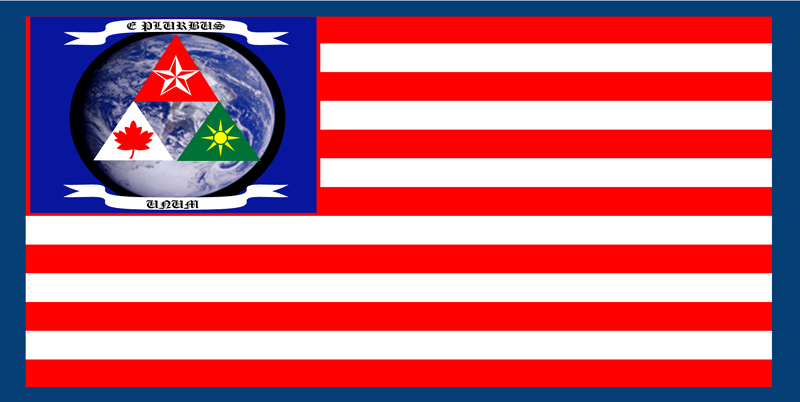| RETURN TO INDEX |  |
|

Overview of the USNA/USSN
The United States of North America (USNA) was formed by rebel factions within the United States of America during the second American revolution of the 2049 to 2050 AD period. This new government was built upon the principles and laws of the original United States of America of the 1789 to 1812 time period. Each and every citizen regardless of race, color, creed, sex, or class was guaranteed the inalienable sovereign rights of life, through the keeping and bearing of military arms for the defense of self and neighbors; liberty, through the freedom of speech, assembly, religious practice, and redress of grievance; and the pursuit of happiness, through the ownership of private property and control of ones personal business in a laissez-faire free market economic system.
These rights were embodied within a near identical version of the Constitution of the old United States of America and the first ten of its amendments known as the Bill of Rights. The principle difference within the Constitution of the USNA was the inclusion of the rights of women and all races to be protected under the laws of the new Republic. These rights included the right to vote, hold office, and have equal citizenship, rights, privileges, immunities, responsibilities, and duties to the new country.
After the UN-controlled Social-Labor Party of the former government had been overthrown in early October of 2049 AD, the rebel government of the fledgling country quickly organized the militia and anti-socialist military forces of the former USA in order to invade Canada and Mexico. Under the promise of true freedom and economic prosperity, the armies of the infant Republic swarmed into the countries of their northern and southern neighbors. With the help of rebels in both countries, the UN puppet governments of Canada and Mexico were crushed by the end of March 2050.
This caused a reorganization of the country into three regions or provinces ruled by the central Republican government. These three provinces were Canada, Mexico, and Americana. These three provinces each used the official common language of English and an internal provincial language. In Canada, the provincial language was French; in Mexico, it was Spanish; and in Americana, it was Latin. The use of three distinct internal languages was thought to provide cultural cohesion among the populations of each province and believed to help increase the difficulty for spies and saboteurs to move from province to province easily.
Weapons production within the USNA was put into high gear after the revolution. In particular, the mass production of tactical and strategic nuclear armaments was given top priority in order to prevent the socialists from invading the North American continent from Central and South America. This caused extreme international tension which ultimately culminated in a tactical nuclear weapon exchange between the Soviet Latin American Union (SLAU) and the USNA.
The SLAU had been trying to delay military action on the part of the USNA through negotiations, while the embargoes imposed by the United Nations slowly starved the nation of vital military resources and materials. Not wanting to fall without firing a shot, the USNA launched a preemptive nuclear strike against the SLAU and successfully conquered Central and South America within a matter of days during the last week of May of 2050 AD.
The overwhelming defeat of SLAU prompted the UN to launch its own nuclear strike shortly thereafter. This exchange of strategic short- and medium-range nuclear weapons instigated the outbreak of the Great War.
Worldwide uprisings against the United Nations drained the Marxist member nations of the international body and prevented them from being able to focus their military might against the USNA. South America was fortified during the mid months of 2050 and plans to invade Japan, Britain, and Australia were put into action. By the years end, Australia had fallen to the Americans while portions of Britain and Japan came under USNA control. The following year brought a massive escalation to the conflict that resulted in the contamination of the planet.
This in part led to the creation of the United States Space Navy, or USSN. This new SpaceNavy was charged with defending the orbital space above the territories of the USNA and continuing the campaign against the UN Space Corps spacestations and shuttles within the inner sphere of the Sol star-system.
The contamination also led to one of the most extensive cyborg research and development programs ever undertaken during the 21st century. This program indirectly led to the creation of the MBR-01 built by the EFR in the early 2060s.
The USSN fought a long and arduous battle against the UNSC forces in space while the USNA planetary military battled for global supremacy. They achieved this goal in 2054 AD and immediately began the construction of underwater and underground bases in order to move their civilians and livestock into them. This project was to protect their population and food supply from what was considered to be an inevitable orbital nuclear attack by the UNSC as the USSN Kentucky class fleet of assault shuttles fell to the increasingly superior ships of the UNSC.
The USNA was destroyed in 2056 AD by the planetoid impact. The EFR was formed from its ashes.